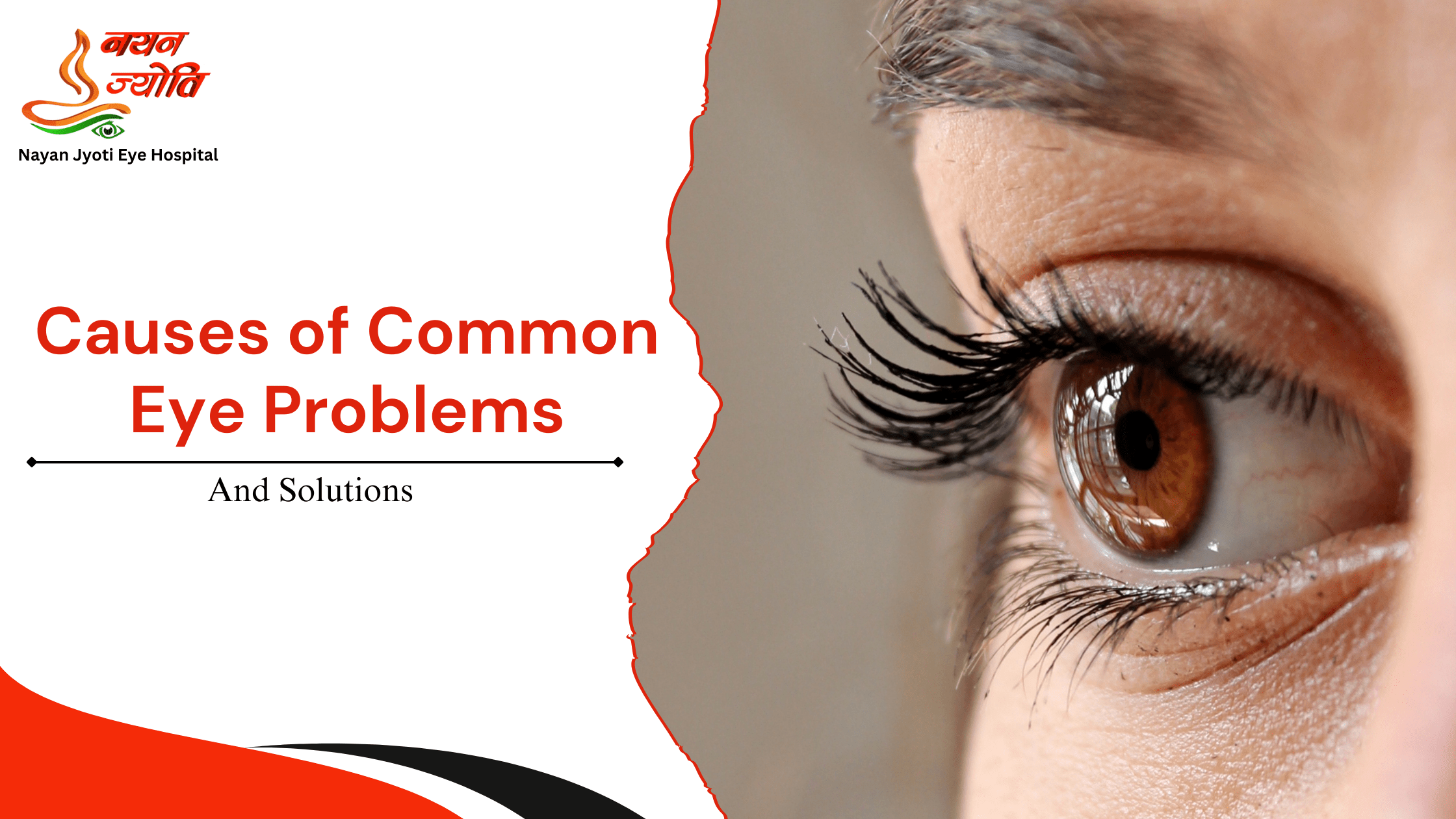
Eye health is crucial to our overall well-being, yet many people
experience vision problems at some point in their lives. Understanding the
causes of these issues can help in early detection, prevention, and treatment.
At Nayan Jyoti Eye Hospital, we specialize in diagnosing and managing a wide
range of eye problems. In this blog, we'll explore the most common causes of
eye problems, helping you to better understand and protect your vision.
Refractive errors are the most common type of vision problem and
occur when the shape of the eye prevents light from focusing directly on the
retina. This can result from:
●
Myopia (Nearsightedness): Caused by an elongated
eyeball, leading to difficulty seeing distant objects.
●
Hyperopia (Farsightedness): Caused by a shorter
eyeball, making it difficult to focus on close objects.
●
Astigmatism: Caused by an irregularly shaped cornea or
lens, leading to blurred or distorted vision.
●
Presbyopia: An age-related condition where the eye's
lens loses flexibility, making it hard to focus on close objects.
Refractive errors can significantly affect daily life, from
difficulty reading to challenges in driving. They are easily diagnosed and can
be corrected with glasses, contact lenses, or refractive surgery.
As we age, our eyes undergo several changes that can lead to
vision problems:
●
Cataracts: Clouding of the eye's lens, often
developing slowly over time, making vision blurry or dim.
●
Macular Degeneration: Affects the macula, leading to
central vision loss, often related to aging.
●
Glaucoma: Increased pressure in the eye that can
damage the optic nerve, leading to vision loss. Age is a significant risk
factor.
Age-related eye problems are a leading cause of vision impairment
in older adults. Regular eye exams are essential for early detection and
management of these conditions, which can slow progression and preserve vision.
Diabetes can lead to several serious eye conditions, collectively known
as diabetic eye disease, including:
●
Diabetic Retinopathy: High blood sugar levels damage
the blood vessels in the retina.
●
Diabetic Macular Edema (DME): Swelling in the macula
caused by fluid leakage from damaged blood vessels.
●
Cataracts and Glaucoma: People with diabetes are at
higher risk for these conditions.
Diabetic eye disease is a leading cause of blindness in adults.
Managing blood sugar levels and regular eye exams are crucial for preventing
and treating these conditions.
Eye infections and inflammation can result from bacteria, viruses,
fungi, or parasites, leading to conditions such as:
●
Conjunctivitis (Pink Eye): Inflammation of the
conjunctiva, often caused by infections or allergies.
●
Keratitis: Inflammation of the cornea, often due to
infections, contact lens use, or injury.
●
Uveitis: Inflammation of the uvea, the middle layer of
the eye, often related to autoimmune diseases or infections.
Infections and inflammation can cause pain, redness, and vision
loss if not treated promptly. Proper hygiene, timely medical care, and safe
contact lens practices are vital in preventing these issues.
Eye injuries can happen due to accidents, sports, or workplace
incidents. Common injuries include:
●
Corneal Abrasions: Scratches on the eye's surface
caused by foreign objects or trauma.
●
Chemical Burns: Exposure to harmful chemicals that can
damage the eye's tissues.
●
Blunt Trauma: A forceful impact that can cause
bleeding, fractures, or retinal detachment.
Eye injuries can lead to permanent vision loss if not treated
immediately. Wearing protective eyewear in risky situations is crucial to
prevent injuries.
Genetics plays a significant role in many eye conditions, with
some problems being inherited from one or both parents. Common genetic eye
conditions include:
●
Retinitis Pigmentosa: A group of inherited disorders
that cause retinal degeneration and vision loss.
●
Congenital Cataracts: Clouding of the lens present at
birth.
●
Color Blindness: Difficulty distinguishing certain
colors, often inherited from parents.
While genetic eye conditions cannot be prevented, early diagnosis
and treatment can help manage symptoms and preserve vision. Genetic counseling
may also be beneficial for families with a history of eye diseases.
Environmental and lifestyle factors significantly contribute to
eye problems, including:
●
Prolonged Screen Time: This can cause digital eye strain,
leading to headaches, blurred vision, and dry eyes.
●
UV Exposure: Prolonged exposure to ultraviolet (UV)
rays can increase the risk of cataracts and macular degeneration.
●
Smoking: Increases the risk of developing cataracts,
macular degeneration, and dry eyes.
●
Poor Diet: Lack of essential nutrients, such as
vitamins A, C, and E, can lead to poor eye health.
Adopting a healthy lifestyle, including a balanced diet, proper
eye protection, and regular breaks from screens, can prevent many environmental
and lifestyle-induced eye problems.
Systemic diseases and autoimmune disorders can also affect the
eyes, leading to conditions such as:
●
Graves' Disease: A thyroid disorder that can cause
bulging eyes and double vision.
●
Lupus and Rheumatoid Arthritis: Can lead to
inflammation in various parts of the eye, including the cornea and retina.
●
Hypertension: High blood pressure can damage the blood
vessels in the retina, leading to hypertensive retinopathy.
Managing the underlying systemic disease is key to preventing and
treating related eye problems. Regular monitoring and eye exams are crucial for
those with autoimmune or systemic conditions.
Understanding the causes of common eye problems is the first step
in protecting your vision. At Nayan Jyoti Eye Hospital, we are dedicated to
providing expert care for a wide range of eye conditions. Whether you're
dealing with refractive errors, age-related changes, or more complex issues
like diabetic eye disease or genetic disorders, our team is here to help you
maintain healthy vision.
Regular eye exams are essential for early detection and treatment
of eye problems. If you notice any changes in your vision or have risk factors
for eye diseases, don't hesitate to visit Nayan Jyoti Eye Hospital. Your eyes
are precious—let us help you protect them for a lifetime.
For more information or to schedule an appointment, visit Nayan Jyoti Eye Hospital in Auraiya, Uttar Pradesh, where your eye health is our top priority.